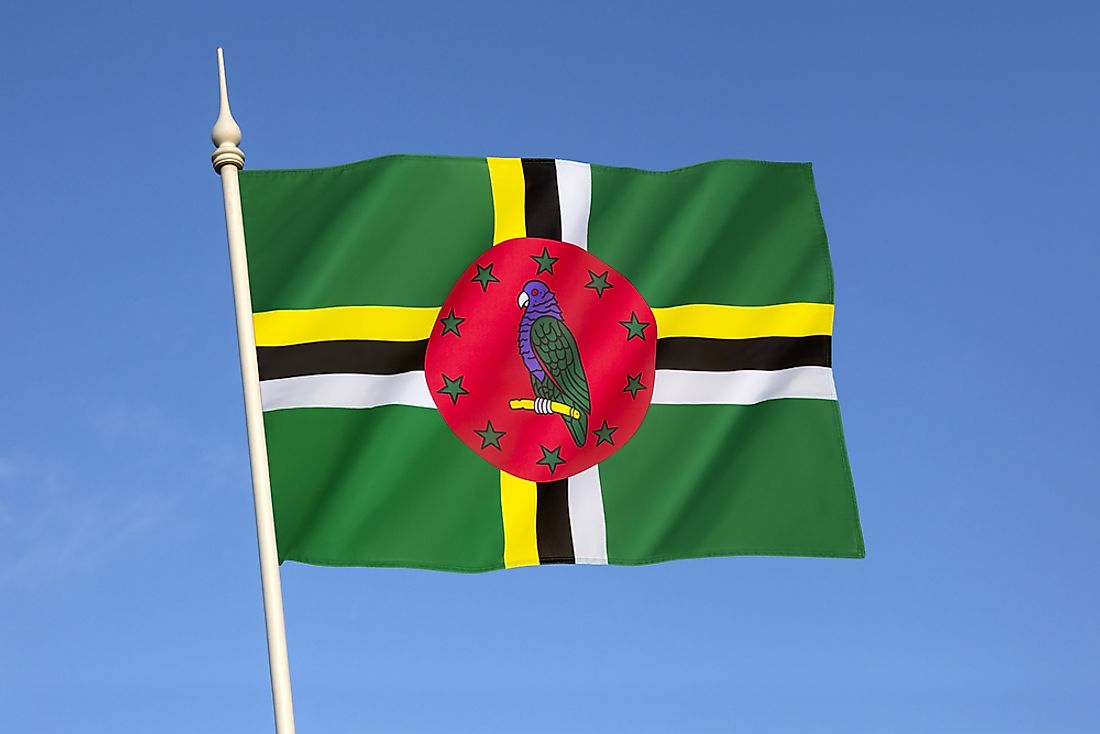The Imperial Amazon Parrot - Animals of Dominica

Also known as the sisserou, the Amazona imperialis is an endemic bird species of Dominica. The population of the bird is estimated to be around 250 (number of mature individuals). The IUCN Red List enlists the bird as an endangered species due to its highly restricted range and low population. Habitat loss due to the replacement of rainforests by banana plantations, poaching for food, and capture for the cage-bird trade are the three top reasons that have led to the drastic decline in the population of the imperial Amazon parrot. Although conservation efforts have helped curb the illegal trade of these birds to a certain extent, other threats to the survival of the parrots continue to exist.
4. Physical Description
The sisserou adults attain an average length of 48 cm. Females of this species weigh around 650 g while males weigh an average of 900 g. The birds have a hooked bill, muscular tongue, and zygodactyl feet. The plumage does not differ much between males and females. The underparts are purple in color and appear to have a scaled effect due to the dark fringes. The head, mantle, neck, and speculum are dark purple in color. The wings are green and the carpal is red. The thighs of the parrot and the vent are a dull green in color. The tail appears to be reddish with a green tip. The primaries are blackish in color.
3. Diet
The imperial Amazon parrot has a vegetarian diet based primarily on fruits, seeds, nuts, berries, shoots and other parts of local vegetation. The birds feed primarily during the morning and evening. The birds prefer the fruits of the Dacryodes groups of plants, R. grandis, L. ternatensis, S. amara, S. globulifera, and a few others. The nuts growing on the Euterpe palms and the seeds and flowers of C. cymosa are also the favorite foods of the parrot.
2. Habitat and Range
The imperial Amazon parrot is endemic to the Caribbean nation of Dominica. Here, the parrot is found in the Morne Diablotin area that hosts the largest population of these birds, the Morne Trois Pitons National Park, and the Central and Northern Forest Reserves. As of 1993, the population of this species was only 80 to 100. By 2003, the number had increased to 150. Currently, the population of the imperial Amazon parrot is about 230 to 350 individuals. The population of these birds living in the Morne Diablotin National Park is about 100 to 175. The Forest Reserves house around 50 to 75 birds, and the Morne Trois Pitons National Park has a small population of about 50 individuals.
Within its small range, the imperial Amazon parrot is found to inhabit the elfin and the montane forests at elevations between 600 and 1,300 m. However, during periods of food shortages, the birds also forage down to elevations of about 150 m. The species is extremely sensitive to habitat modification and small changes in habitat can force the birds to leave their traditional nesting and foraging grounds to newer locations. The imperial Amazon parrot builds its nest inside cavities in tall trees of the forest. Since the nest cavities remain heavily guarded by epiphytes and vines, observing the nesting activities of the birds is a difficult task.
1. Behavior
The sisserou is shy and elusive in nature and hence it is very difficult to approach the bird. They are either found in pairs or in small groups of up to three. Occasionally, they are found in the company of red-necked amazons with whom they share their range. The birds have strong wings that help them fly efficiently. They are also powerful climbers. The color of their feathers camouflage them well in the surrounding foliage and hence detecting them becomes a mammoth task. The call of these birds is a mix between a trill, squawk, and shriek.
The imperial Amazon parrots are well-known for their loyalty towards their partner and they mate for life. Nesting occurs between February and April. Nests are built deep in the rainforest tree cavities and the female lays a clutch of two eggs in the nest. The eggs are incubated for about 28 days after which the hatched fledglings are brought up by both the parents. Usually, only a single fledgling survives to adulthood and once fully-feathered, is ready to leave the nest. The birds not only mate for life but also nest in the same tree cavity for life unless natural or man-made factors destroy their nesting tree.











